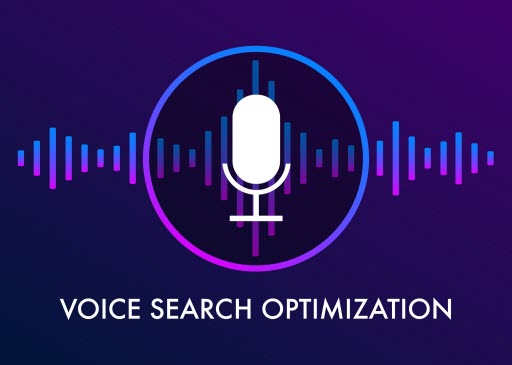As voice-enabled devices become increasingly embedded in our daily lives, a new frontier in digital marketing and SEO has emerged: voice-first search optimization. With the surge of smart speakers, voice assistants, and AI-driven audio search tools, users are shifting from typing to speaking when searching for information. This shift is revolutionizing how businesses must think about their digital presence.
In this article, we’ll delve into what voice-first search optimization is, why it matters, how voice search differs from traditional search, and the best strategies to ensure your content ranks highly in voice search results. Whether you’re a business owner, content strategist, or digital marketer, understanding voice-first SEO is no longer optional—it’s essential.
What Is Voice-First Search Optimization?
Voice-first search optimization refers to the practice of tailoring online content and digital strategies to cater specifically to voice queries. Unlike typed searches, voice queries are more conversational, longer, and often posed as complete questions.
Optimizing for voice-first means understanding how people speak, what they expect in responses, and how voice assistants like Google Assistant, Alexa, Siri, and Cortana parse and prioritize search results.
Why Voice Search Is Growing Rapidly
The rise in voice search is no coincidence—several major factors have contributed to its explosive adoption:
A. Increased Use of Smart Devices
Voice-enabled smart speakers such as Amazon Echo, Google Nest, and Apple HomePod are now commonplace in homes and offices.
B. Mobile Integration
Voice assistants are built into almost every modern smartphone, making voice search easily accessible anytime.
C. Advancements in AI and NLP
Machine learning, AI, and Natural Language Processing (NLP) have made voice recognition far more accurate and user-friendly.
D. Hands-Free Convenience
Voice search allows users to multitask, making it the preferred method for searches while driving, cooking, or exercising.
How Voice Search Differs from Traditional Text Search

To optimize effectively, it’s crucial to understand the unique nature of voice searches compared to traditional keyword queries.
A. Conversational Tone
Voice queries often mimic natural speech patterns. Instead of typing “weather Paris,” users might say, “What’s the weather like in Paris today?”
B. Longer Phrases
People tend to use complete sentences in voice queries, which leads to longer-tail keywords being more relevant.
C. Question-Based Queries
Voice searches are usually phrased as questions beginning with who, what, where, when, why, and how.
D. Immediate Intent
Users often expect instant answers. Voice search is typically used for quick facts, directions, or local business information.
Understanding the Role of Voice Assistants
Voice assistants act as intermediaries between the user and search engines. Here’s how major platforms handle voice queries:
A. Google Assistant
Pulls answers from featured snippets (position zero).
Uses Google My Business listings for local results.
B. Amazon Alexa
Relies on Bing for search queries.
Prioritizes Amazon services and Alexa Skills for answers.
C. Apple Siri
Uses Google for web searches but pulls data from Apple Maps, Yelp, and proprietary sources for local info.
D. Microsoft Cortana
Primarily powered by Bing and integrates with Microsoft’s suite of services.
Key Strategies for Voice-First Search Optimization

To dominate voice search rankings, businesses and marketers must adapt their content and SEO techniques. Below are essential strategies:
A. Optimize for Featured Snippets
Aim for position zero on Google SERPs.
Provide clear, concise answers in paragraph, list, or table formats.
B. Use Natural Language and Conversational Phrases
Write as if you’re speaking to someone.
Include complete questions and answers in your content.
C. Target Long-Tail Keywords
Focus on keyword phrases that reflect how people speak.
Use tools like AnswerThePublic, SEMrush, or Google’s “People Also Ask.”
D. Implement Structured Data (Schema Markup)
Help search engines better understand and categorize your content.
Use schema for FAQs, local business, how-tos, products, and reviews.
E. Build an FAQ Section
Voice searches are often questions, so answering them directly on your page can improve your chances of being selected.
F. Improve Local SEO
Voice queries are frequently local in nature (e.g., “Where’s the nearest coffee shop?”).
Ensure your Google Business Profile is complete and accurate.
G. Ensure Mobile Optimization
Most voice searches are done on mobile devices.
Your site must be responsive, fast-loading, and easy to navigate.
H. Boost Website Speed
A slow site reduces the chance of being selected for voice results.
Use tools like Google PageSpeed Insights to identify bottlenecks.
I. Secure Your Website (HTTPS)
Google favors secure sites, especially for mobile and voice search.
J. Focus on User Intent
Understand the different types of intent: informational, navigational, transactional, and local.
Examples of Voice Search-Friendly Content
Creating content that caters to voice search can take many forms. Here are some examples:
A. “How-to” Guides
“How do I change a flat tire?”
Create step-by-step instructions with clear subheadings.
B. Location-Based Content
“Where can I buy organic food near me?”
Include directions, open hours, and contact info.
C. Listicles
“What are the top five healthy breakfast ideas?”
Use bullet points or numbered lists for easy voice reading.
D. Comparisons and Definitions
“What’s the difference between Medicare and Medicaid?”
Provide concise definitions and comparisons.
Voice Search and E-Commerce
Voice search is rapidly changing how consumers shop online:
A. Voice-Activated Purchases
Smart speakers are being used to reorder common products or track packages.
B. Personalized Shopping
Voice assistants remember past purchases and suggest options based on preferences.
C. Voice SEO for Product Pages
Use natural language in product descriptions and answer common customer questions.
Common Mistakes to Avoid in Voice SEO
When optimizing for voice search, avoid these pitfalls:
A. Ignoring Mobile Users
Since most voice searches come from mobile, not optimizing for mobile is a major missed opportunity.
B. Stuffing Keywords
Keyword stuffing is outdated and counterproductive for voice search, which favors conversational language.
C. Overlooking Local Search
Voice assistants frequently prioritize nearby businesses—ensure your local SEO is strong.
D. Failing to Structure Content
Unorganized pages confuse search engines and reduce chances of snippet inclusion.
Voice Search SEO Tools and Resources
Here are some tools to help improve your voice search strategy:
A. Google Search Console
Track how your content performs and monitor mobile usability.
B. SEMrush
Find long-tail keywords and identify question-based search phrases.
C. AnswerThePublic
Visualizes questions and phrases related to your target keyword.
D. Google My Business
Keep your business details updated for better local voice search visibility.
E. PageSpeed Insights
Optimize page load speed, which is crucial for voice search results.
The Future of Voice Search
As voice search technology becomes smarter and more intuitive, several trends are expected to shape its future:
A. Voice Commerce Expansion
More brands will integrate voice capabilities into their e-commerce platforms.
B. Personalized Voice Assistants
AI-driven assistants will tailor answers based on personal data, behavior, and preferences.
C. Voice-Only Websites
Some sites may be built specifically for audio-only navigation and interaction.
D. Multilingual Voice SEO
With growing global adoption, optimizing for multiple languages will become essential.
E. Integration with AR/VR
Voice control will enhance interaction within augmented and virtual reality environments.
Industries Benefiting Most from Voice Search
While voice search is beneficial across the board, some industries stand out:
A. Restaurants and Food Delivery
Voice commands for “restaurants near me” or “order pizza” are extremely common.
B. Healthcare
Patients use voice search to find symptoms, clinics, or emergency care.
C. Retail and E-Commerce
Shoppers look for deals, availability, and reviews using voice.
D. Travel and Hospitality
Users ask about flight schedules, hotel bookings, and travel tips.
E. Local Services
Voice queries for “plumber near me” or “24-hour electrician” are frequent.
Conclusion: The Voice-First Future Is Here
Voice-first search optimization is no longer a luxury—it’s a necessity for modern digital strategies. As consumers increasingly rely on voice-enabled devices, businesses that adapt their SEO tactics to this new reality will gain visibility, traffic, and conversions.
By embracing conversational language, focusing on long-tail keywords, enhancing local SEO, and providing direct answers to user questions, you’ll be positioning your brand at the forefront of voice-first discovery.
Don’t wait for the future to catch up—start optimizing your content for voice today and lead the way in the evolving search landscape.







